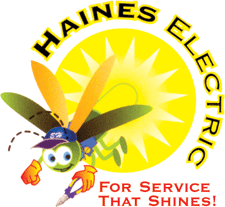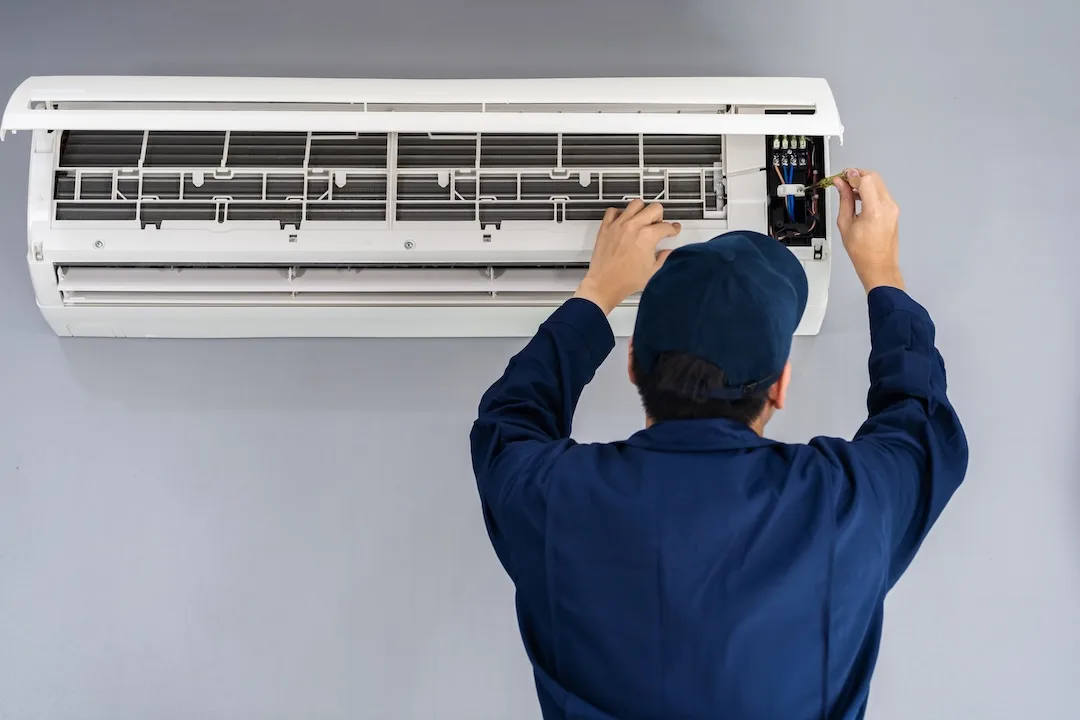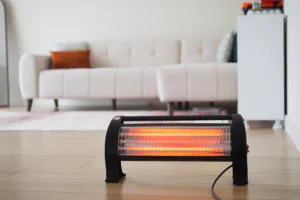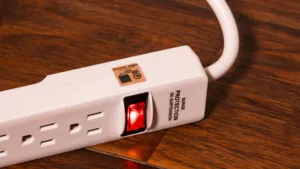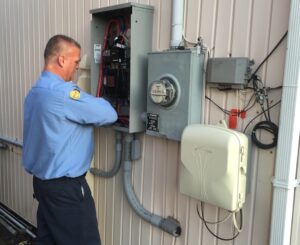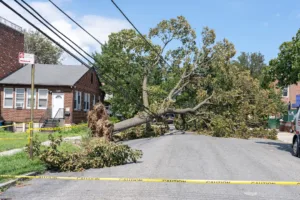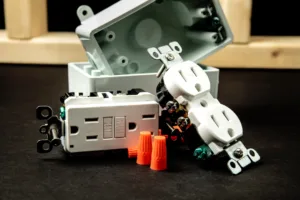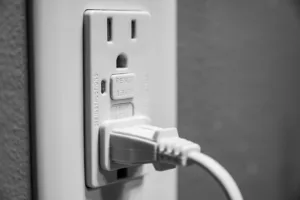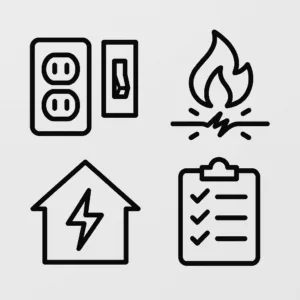Installing a ductless mini-split system? You might be wondering if the HVAC installer handles everything—or if you also need an electrician to get the job done. Spoiler alert: yes, you absolutely need a licensed electrician.
While your HVAC contractor takes care of refrigerant lines and air handling units, a mini-split requires electrical work that should always be handled by a trained pro.
⚙️ What Does a Mini-Split System Involve?
Mini-split air conditioners are popular for their energy efficiency and flexibility. They consist of two parts:
- Indoor heads that blow cool (or warm) air into your space
- An outdoor condenser unit that powers the system
Each component needs to be connected with refrigerant lines, communication wire, and—most importantly—high-voltage electrical wiring to function safely and properly.
👷 What Your HVAC Contractor Does
Your HVAC tech:
- Mounts the indoor heads
- Connects the refrigerant lines
- Tests cooling and heating functions
- Seals up and pressures the system
They make sure your mini-split keeps your rooms comfortable—but they are not licensed to handle electrical wiring in most cases.
⚡ What Your Electrician Handles (And Why It Matters)
A licensed electrician like Haines Electric is responsible for:
- Installing a dedicated 240V circuit from your main panel to the outdoor unit
- Running properly rated outdoor conduit and wiring to the mini-split
- Installing a code-compliant AC disconnect box
- Ensuring your panel can handle the load—upgrading it if needed
- Bonding and grounding the system for maximum safety
Without this, your mini-split might not power on, trip breakers, or worse—become a fire or shock hazard.
🚫 Why You Shouldn’t DIY Mini-Split Wiring
Mini-splits might look “plug-and-play,” but wiring one wrong can:
- Void your warranty
- Risk electrical fires or shock
- Fail inspection (especially in Nassau County)
- Damage your system permanently
Hiring a pro saves you money, time, and peace of mind.
📍 Local Codes Matter in Nassau County
New York State and Nassau County have strict electrical codes that apply to mini-split installations. For example:
- Outdoor units must have a disconnect switch
- All wiring must be rated for exterior exposure
- Grounding and bonding are mandatory
- In some cases, GFCI protection is required
If you want your system to pass inspection or avoid future headaches, bringing in a licensed electrician is the smart move.
🧱 What Is a Dedicated Circuit and Why Does Your Mini-Split Need One?
A dedicated circuit is a power line that runs directly from your main electrical panel to a single appliance — in this case, your mini-split AC. This ensures your unit has enough power without sharing the circuit with other appliances like microwaves or washing machines.
Why it matters:
- Prevents breaker trips during operation
- Reduces electrical interference
- Ensures maximum efficiency
- Meets code requirements for high-power appliances
Without a dedicated circuit, your mini-split might work inconsistently — or not at all.
🔲 The Importance of a Disconnect Box for Outdoor Units
Every outdoor mini-split condenser requires a disconnect box nearby. This small box gives technicians a way to safely shut off power before servicing the unit. It’s not optional — it’s required by Nassau County electrical code.
We install both fused and non-fused disconnects, depending on the unit’s requirements, and make sure the installation is:
- Weather-rated
- Mounted securely to siding or masonry
- Easily accessible for maintenance or emergencies
This protects your home, your HVAC technician, and your equipment.
💡 Do Mini-Splits Use Less Power Than Central AC?
Yes — in many cases, ductless mini-splits are more energy-efficient than traditional central air systems. They offer zoned cooling, so you only run the unit in the room you’re using, and they typically have inverter-driven compressors that adjust power based on demand.
But don’t let the lower energy use fool you — they still require proper high-voltage wiring and protection to run safely. Skimping on electrical setup can cancel out the energy savings and lead to dangerous failures.
🏠 Is Mini-Split Wiring Different for a Multi-Zone System?
Yes. A multi-zone mini-split system, which powers several indoor heads from one outdoor unit, often requires:
- A larger circuit breaker
- Heavier gauge wire
- Potential panel upgrades if your current system can’t handle the load
Each indoor head doesn’t need a separate electrical hookup — they all communicate with and draw power from the outdoor unit. But the wiring to that condenser needs to be sized and configured correctly.
Haines Electric can assess your system’s needs and make sure your wiring is safe, clean, and compliant.
🧰 How Your Electrician Coordinates with Your HVAC Installer
We don’t just show up and guess — we coordinate with your HVAC contractor to:
- Confirm unit specs and power requirements
- Ensure disconnect placement is approved and safe
- Time the electrical work to fit the installation schedule
- Handle inspections, permits, and code documentation as needed
This saves you from the stress of back-and-forths and ensures the entire system is ready to run on day one.
✅ The Bottom Line
Yes, you need an electrician to wire a mini-split. HVAC contractors handle the heating and cooling side, but a certified electrician ensures your system is:
- Powered correctly
- Installed to code
- Grounded and bonded for safety
- Fully protected against overcurrent or short circuits
📞 Call Haines Electric for Mini-Split Wiring in Nassau County
Thinking about installing a ductless AC system in your home? Let Haines Electric handle the electrical side. We specialize in mini-split wiring and disconnect installation, working seamlessly with your HVAC team.
Serving all of Nassau County with licensed, insured, and professional service.
Call today to get a quote or schedule your mini-split wiring service.
